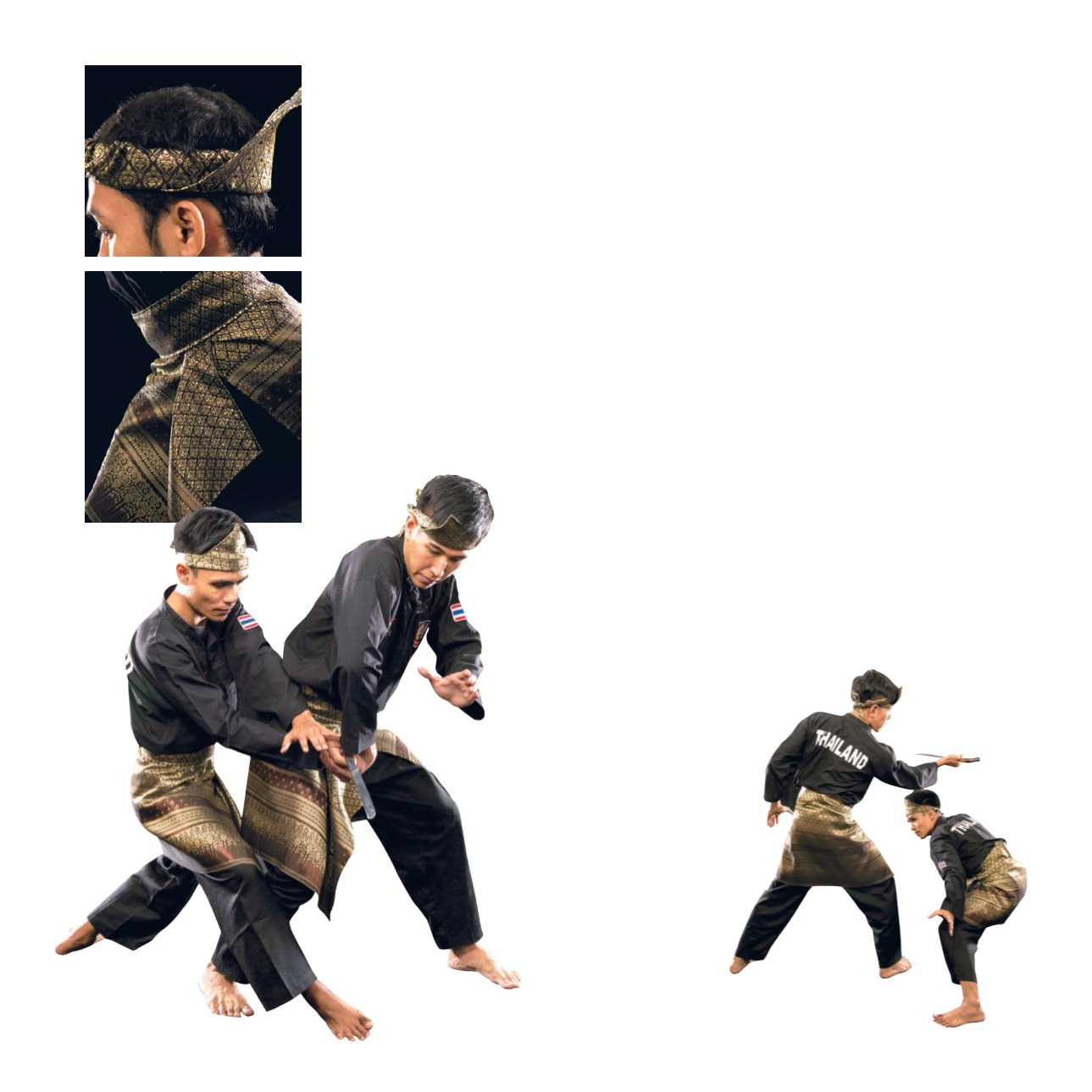

Folk Games and Sports
|
189
Silat or Sila is a Malay word which means fights with spirit of
sportsman. Students must pledge to use the Silat strategy in the
inoffensive ways in order to protect himself only, and not to hurt others.
Before training, students must prepare their Wai Khru offerings which
consist of white cloth, Khao Sama-ngat, white thread and a ring to offer
to the trainer. Students must be at least 15 years old and study in the
period of 100 days to complete the course.
The tradition of playing Silat, the player must wear Malayan
dress consists of trousers, short sleeves or long sleeves shirt which is
slightly cover the knees, and Sarong (Malayan Skirt) cover the top part
of trousers. The colour of the costumes might be individually different.
In proper costume, the players stand in the opposite corner of the
arena. Then they come forth to pay respect to each other by touching
each other’s hands, and dab their own forehead and the chest. This
salutation is called
“Salamat”
.
Before the Wai Khru ritual, players take turns dancing in the form
they learned for one time and casting spell in Arabic words to seek 4
blessings: safe from the opponent; forgive the opponent; gain love from
neighbours; and ask the audience to pay attention. When Wai Khru
ritual is finished, music starts to play in an arousing tempo, while the
players will walk toward each other to fight by using their hands to hit,
thrust, push, or feet to kick, flick. They pull each other to find a chance
to throw or push the opponent to fall or wrestle to tightly cradle. They
must take their turn to make offensive or defensive moves. Silat takes
about 15 to 20 minutes to complete and they
“Salamat”
or salute each
other again after the fight has completed.
• Turban: folded in triangle and put
the sharp end of the fabric in the
center or side.
• Sarong: mostly are sarong
fabric folded to cover the
trousers over knees which
is called differently such as
Pha Li-nang, Pha So-kae, etc.


















